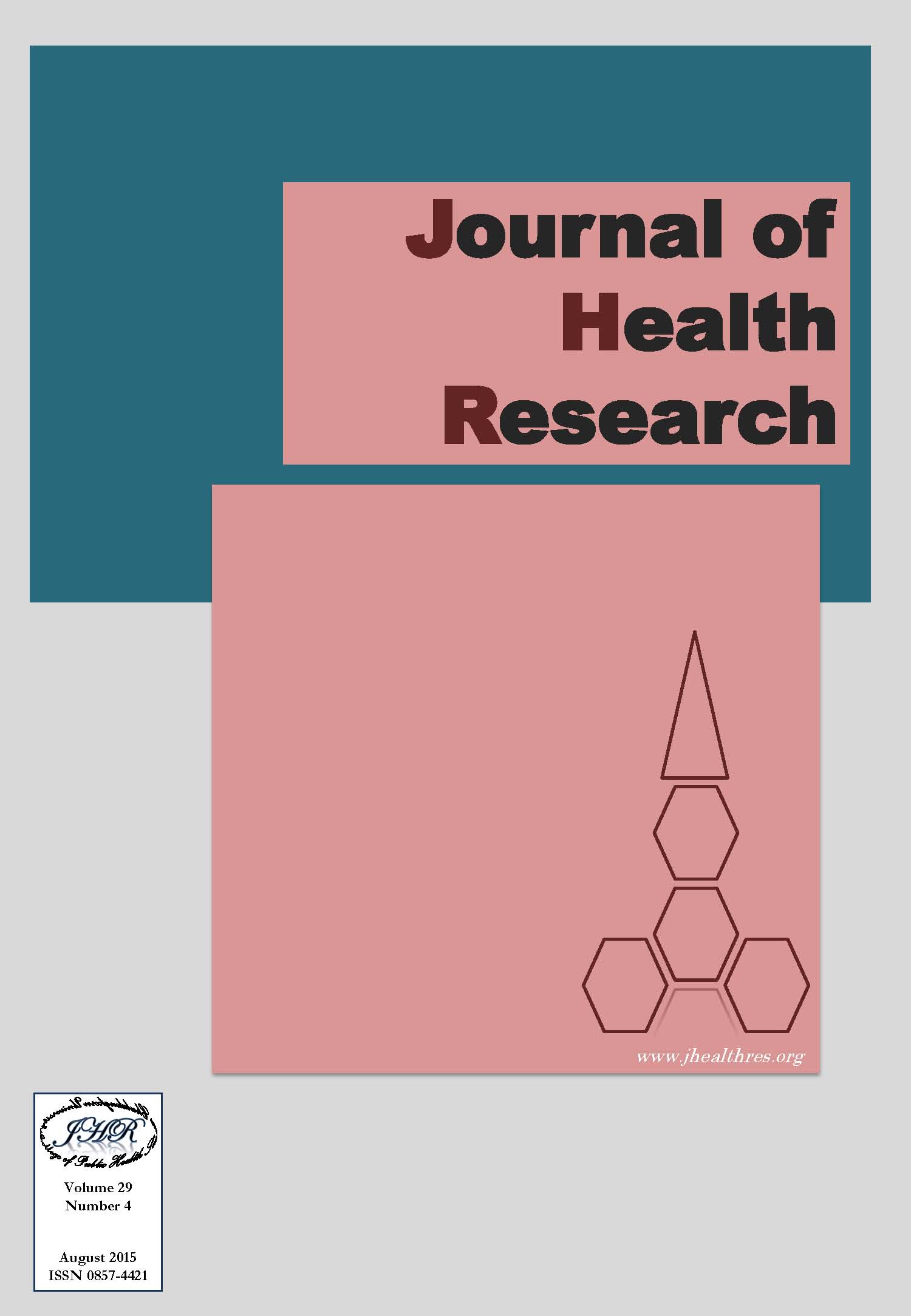Health Risk Assessment and BTEX Exposure among Car Park Workers at a Parking Structure in Bangkok, Thailand
Keywords:
Health risk assessment, VOCs, BTEX, Exposure, Car parking, ThailandAbstract
Background: Nowadays, the demand for parking places in Bangkok, the capital city of Thailand, is growing dramatically. To utilize the land to its full value, the trend has changed tobuilding multi-story car parks with underground parking, especially at department stores and hotels, inducing poor air quality. Vehicle emissions from their activity in car parks has become a main source of toxic air pollutants like carbon monoxide, particulate matter and volatile organic compounds (VOCs) which can contribute to the health problems.
Methods: This study aimed to estimate the level of benzene, toluene, ethylbenzene and xylene (BTEX) exposure among car park workers during weekdays and weekend in summer of 2014 at a parking structure in the Bangkok Metropolitan area. Carcinogenic and non-carcinogenic health risks were assessed by US Environmental Protection Agency (U.S. EPA) approaches. Personal active sampling through activated charcoal tube, followed by National Institute for Occupational Safety and Health (NIOSH) standard method, was used to collect air sample at the breathing zone of workers for 8 hours continuously. Gas chromatography with flame ionization detector (GC-FID) was performed for BTEX analysis.
Results: Mean concentrations (±SD) of benzene, toluene, ethylbenzene, and xylenes were 11.28 (±5.03), 56.13 (±73.96), 7.17 (±9.20), and 10.59 (±6.32) µg/m3 respectively. BTEX concentrations on weekdays were higher than on weekends. The different working location among car park workers showed the difference of BTEX mean concentrations where underground floor were higher than the upper storey’s levels. Risk of cancer from benzene exposure was at 4.37×10-6 and for ethylbenzene at 1.47×10-6 which were over acceptable levels of less than 10-6. Derived lifetime risks of developing cancer were 5 in one million and 2 in one million for benzene and ethylbenzene respectively. The non-carcinogenic risks were within acceptable limits (HQ<1) and were at 0.360, 0.010, 0.006, and 0.105 for benzene, toluene, ethylbenzene, and xylene, respectively.
Conclusion: The study suggests that the car park workers carry cancer health risks likely due to exposure of BTEX, and for health promotion of these workers, appropriate education and risk communication should be given, and use of PPE such as masks should be encouraged. The suitability of this risk assessment method for Thailand and other Asian countries should also be assessed.






